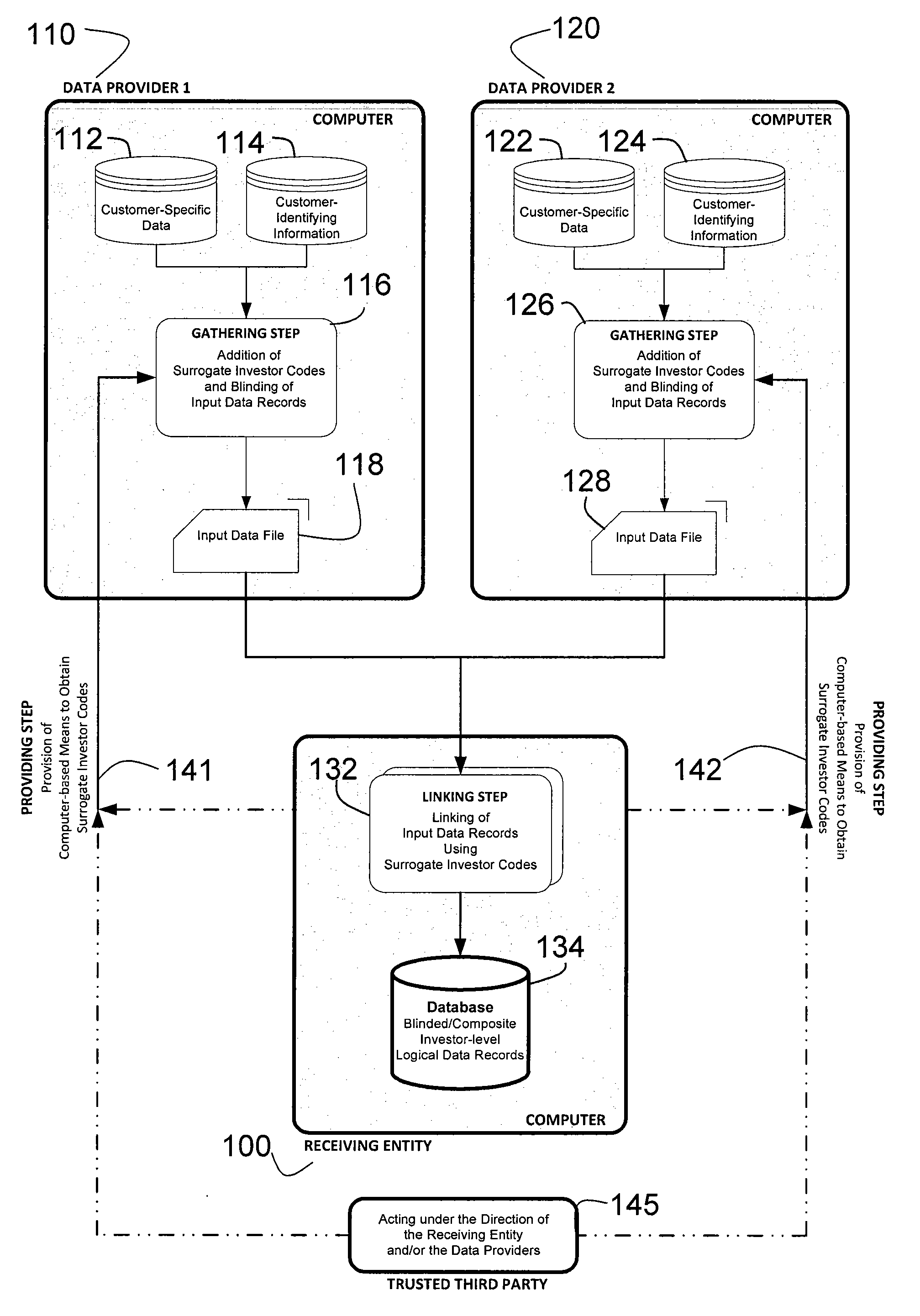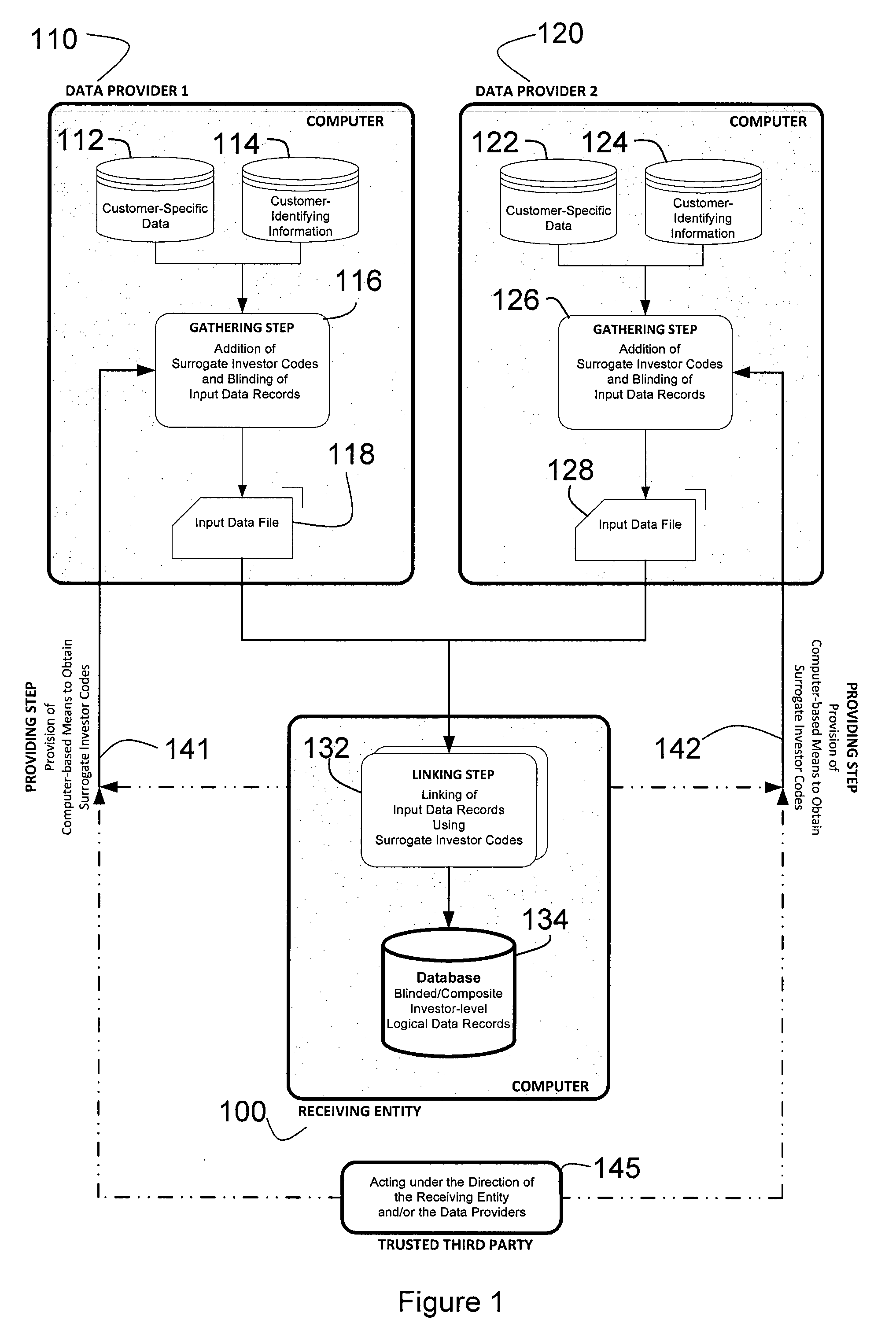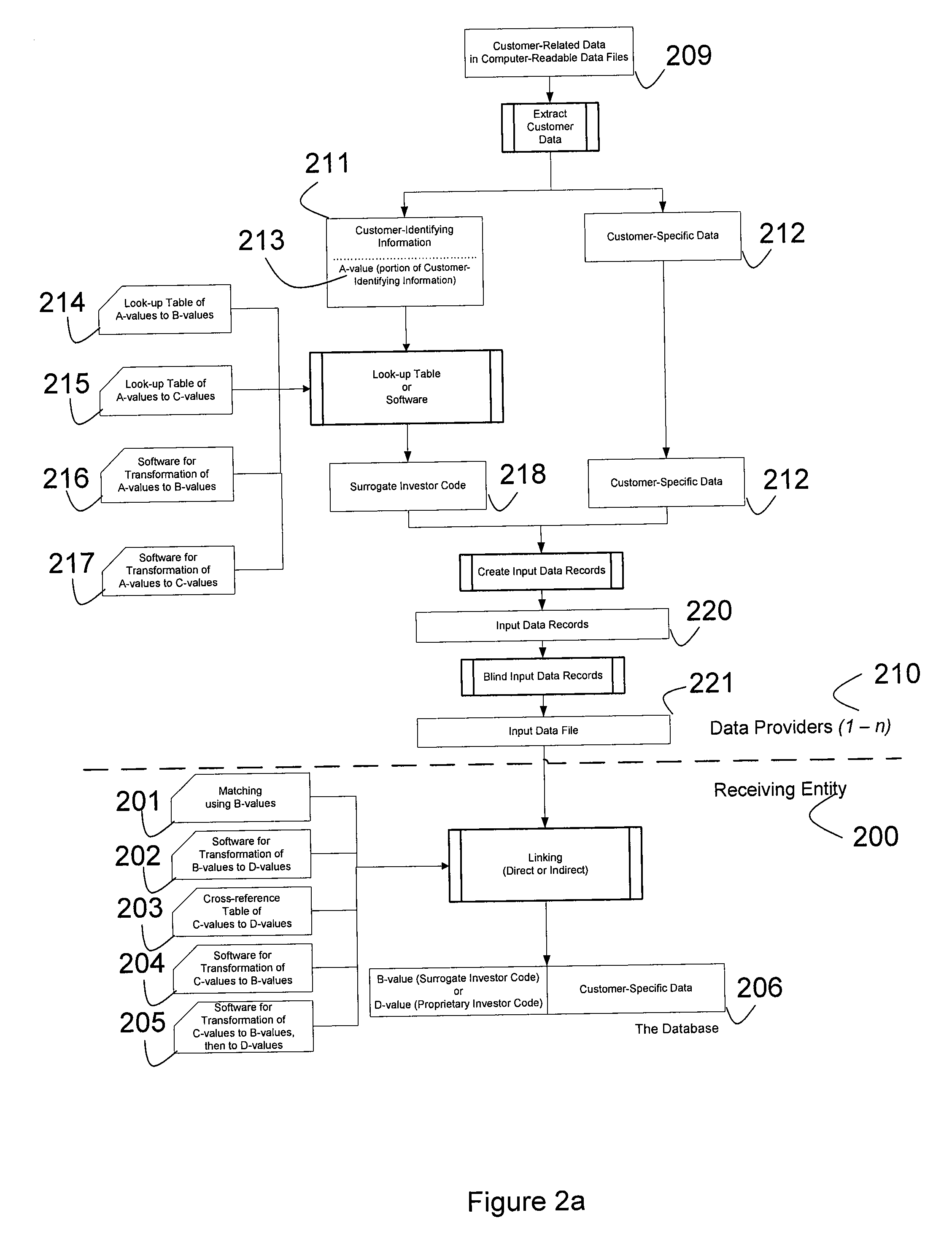Method and system for compiling a multi-source database of composite investor-specific data records with no disclosure of investor identity
a database and investor-specific technology, applied in the field of computer-processable market research databases, can solve the problems of survey results invalid, survey process subject to bias, and it is almost always difficult (or sometimes even impossible) for a survey researcher to know the extent of the bias, and achieve the effect of effective operation
- Summary
- Abstract
- Description
- Claims
- Application Information
AI Technical Summary
Benefits of technology
Problems solved by technology
Method used
Image
Examples
embodiment type i
[0161]Embodiment Type I is distinguished from other types of embodiment by the following combination of elements:
[0162](i) In the Providing Step of the invention, the provision to each Data Provider of software that transforms all allowable A-values into corresponding Surrogate Investor Codes that, with respect to any particular A-value, are the same for all Data Providers and thus are B-values—such software constituting the computer-based means to obtain such corresponding Surrogate Investor Codes;
[0163](ii) In the Gathering Step of the invention, the substitution of B-values for A-values, using the software provided in the Providing Step; and
[0164](iii) In the Linking Step of the invention, the use of the Surrogate Investor Codes (i.e., B-values) either directly or indirectly for linking data contained in the Input Data Files.
[0165]This embodiment type is now explained in greater detail, with reference to FIG. 3.
[0166]Providing Step
[0167]In the Providing Step, each Data Provider (...
embodiment type ii
[0191]Embodiment Type II is distinguished from other types of embodiment by the following combination of elements:
[0192](i) In the Providing Step of the invention, the provision to each Data Provider of a computer-readable look-up table that contains all allowable A-values and their corresponding Surrogate Investor Codes that, with respect to any particular A-value, are the same for all Data Providers and thus are B-values—such look-up table constituting the computer-based means to obtain such corresponding Surrogate Investor Codes;
[0193](ii) In the Gathering Step of the invention, the substitution of B-values for A-values, by using the look-up table provided in the Providing Step; and
[0194](iii) In the Linking Step of the invention, the use of the Surrogate Investor Codes (i.e., B-values) either directly or indirectly for linking data contained in the Input Data Files.
[0195]This embodiment type is now explained in greater detail, with reference to FIGS. 4a and 4b.
[0196]Providing S...
embodiment type iii
[0224]Embodiment Type III is distinguished from other types of embodiment by the following combination of elements:
[0225](i) In the Providing Step of the invention, the provision to each Data Provider of software that trans-forms all allowable A-values into corresponding Surrogate Investor Codes that, with respect to any particular A-value, are different for each Data Provider and thus are C-values—such software constituting the computer-based means to obtain such corresponding Surrogate Investor Codes;
[0226](ii) In the Gathering Step of the invention, the substitution of C-values for A-values, using the software provided in the Providing Step; and
[0227](iii) In the Linking Step of the invention, the indirect use of the Surrogate Investor Codes (i.e., C-values) for linking data contained in the Input Data Files—accomplished by performing a software-based transformation that converts each C-value back into the corresponding B-value, then substituting such B-value for the C-value, and...
PUM
 Login to View More
Login to View More Abstract
Description
Claims
Application Information
 Login to View More
Login to View More - R&D
- Intellectual Property
- Life Sciences
- Materials
- Tech Scout
- Unparalleled Data Quality
- Higher Quality Content
- 60% Fewer Hallucinations
Browse by: Latest US Patents, China's latest patents, Technical Efficacy Thesaurus, Application Domain, Technology Topic, Popular Technical Reports.
© 2025 PatSnap. All rights reserved.Legal|Privacy policy|Modern Slavery Act Transparency Statement|Sitemap|About US| Contact US: help@patsnap.com



